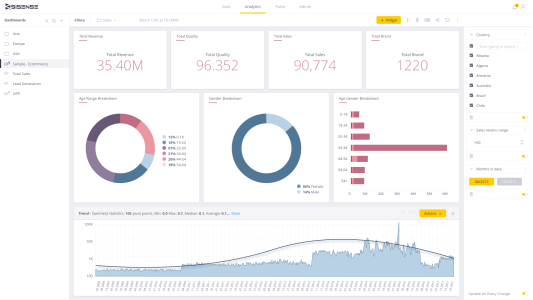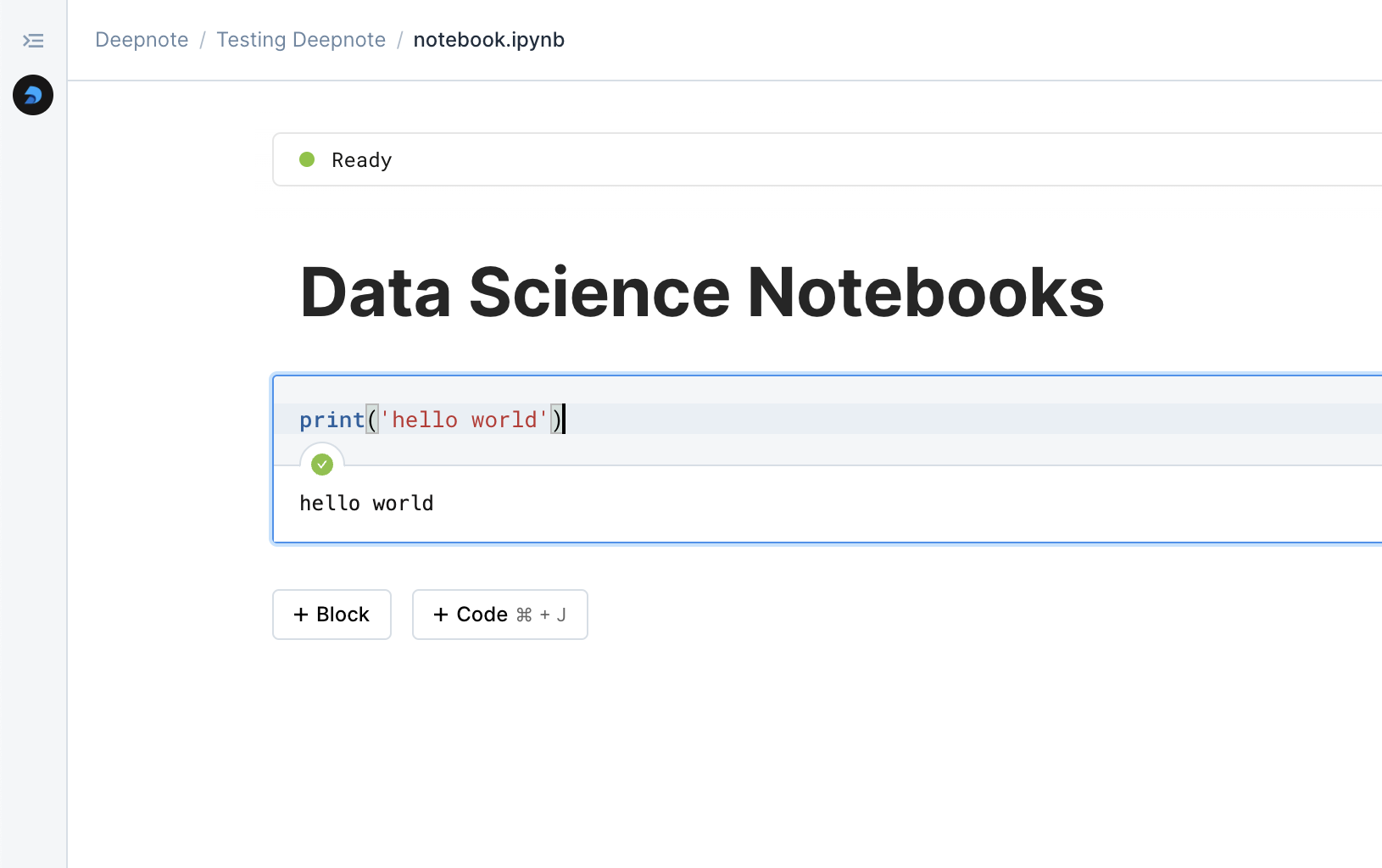

Sisense

Comparing two data science notebooks.






In the evolving landscape of data platforms, Sisense and Deepnote represent distinct approaches to data analytics and science. While both platforms aim to help organizations derive value from data, they serve fundamentally different needs within the analytics ecosystem.
Sisense positions itself as an enterprise business intelligence and analytics platform, focusing on making complex data analytics accessible to business users through its end-to-end analytics solution. The platform emphasizes data visualization, embedded analytics, and business insights generation.
Deepnote takes a more technical approach, focusing on collaborative data science workflows and notebook-based development. The platform emphasizes real-time collaboration among data professionals while providing comprehensive integration capabilities.
Sisense's approach centers on business intelligence and data visualization. The platform utilizes its proprietary In-Chip technology and ElastiCube architecture to handle large datasets efficiently, making complex analytics accessible through a user-friendly interface. The emphasis is on creating interactive dashboards and generating business insights without requiring extensive technical knowledge.
Deepnote provides a more traditional data science environment enhanced with modern collaboration features. The platform focuses on providing a comprehensive notebook experience where data scientists can write code, analyze data, and collaborate in real-time. Its approach emphasizes flexibility and extensibility for technical teams.
Sisense offers a polished, business-oriented interface designed for creating and sharing analytics dashboards. The platform provides drag-and-drop functionality alongside more advanced features for technical users, making it accessible to both business analysts and data professionals.
Deepnote presents a more technical interface focused on code-based analysis and development. The platform combines familiar notebook functionality with modern features like real-time collaboration and integrated development tools, creating an environment optimized for data science work.
Sisense's approach to data handling centers on its ElastiCube technology, which allows for efficient processing of large datasets. The platform excels at combining data from various sources and making it accessible for business analytics, with particular strength in handling complex data relationships.
Deepnote takes a more flexible approach to data integration, offering connections to various data sources and computing environments. The platform supports direct interaction with data through code, making it particularly suitable for custom analysis and data science workflows.
Sisense excels in creating polished, interactive dashboards and visualizations designed for business users. The platform offers extensive visualization options and the ability to embed analytics directly into applications and workflows, making it particularly valuable for organizations focusing on data-driven decision making at scale.
Deepnote approaches visualization through a more technical lens, providing flexibility in creating custom visualizations through code. While the platform supports various visualization libraries, its focus is more on the development process and technical analysis rather than creating polished business dashboards.
Sisense's collaboration features focus on sharing dashboards and insights across an organization. The platform supports different levels of access and interaction, allowing organizations to maintain control over data access while facilitating broad consumption of analytics insights.
Deepnote emphasizes real-time collaboration among data professionals, enabling simultaneous work on analytical problems. The platform's features support technical collaboration through code sharing, version control, and integrated communication tools.
Sisense primarily serves organizations needing robust business intelligence capabilities. The platform is particularly valuable for:
Deepnote caters to data science teams requiring a technical development environment. The platform excels for:
The decision between Sisense and Deepnote often reflects fundamental differences in organizational needs and use cases. Teams requiring comprehensive business intelligence capabilities and polished dashboards might find Sisense's approach more aligned with their needs. Its focus on accessibility and visualization makes it particularly valuable for organizations prioritizing business analytics.
Organizations focusing on data science and custom analysis might find Deepnote more suitable. Its emphasis on technical development and collaboration creates an environment well-suited to data science teams requiring flexibility and control over their analytical processes.
Both platforms continue to evolve, with Sisense expanding its AI capabilities and embedded analytics features, while Deepnote enhances its collaborative features and integration capabilities to serve modern data science teams.
Sisense and Deepnote serve distinctly different needs in the data platform ecosystem. Sisense excels in providing a comprehensive business intelligence platform, particularly valuable for organizations requiring polished analytics dashboards and broad accessibility to data insights.
Deepnote offers a more focused platform for data science teams, emphasizing technical development and collaboration. Its support for custom analysis and extensive integration options makes it particularly valuable for teams requiring sophisticated analytical capabilities.
The choice between these platforms should align with your organization's primary needs:
Understanding these distinctions helps ensure you select the platform that best supports your specific use cases while providing the necessary tools for success in your data work.